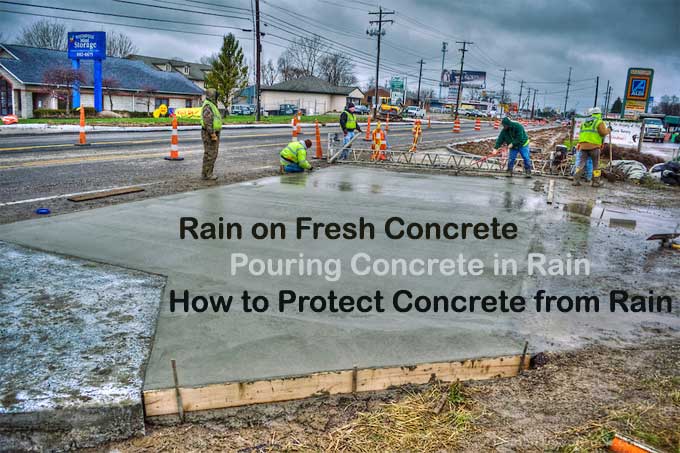
A Brief Overview of Rain Effects on Fresh Concrete & Solution
Concrete surfaces can encounter unforeseen challenges if sudden downpours of rain occur. Damage is determined by whether the surface is protected before the rain comes and how well it cures.
As a result of these variable factors, it's important to consider some factors to determine what causes rain to damage concrete.
The concrete paving industry uses dry days for many of its projects. You can find out right here what to do if it has already rained on your newly laid concrete, and find out what you need to do if it rains right now.
The 3 Effects of Rain on Concrete
Concrete Washed Out
Rain usually causes issues at the surface. Fortunately, the damage is unlikely to threaten the structural integrity. It is unfortunate, but rain will wash away some cement and reveal the aggregate. Concrete that is integrally colored may also show some color streaking.
Cracking
The cement will wash away from the surface, resulting in a surface that is more likely to wear rapidly. Additionally, a damaged concrete surface will let more water in, causing further freeze or thaw cycles.
Frozen or thawed surfaces are more likely to crack as the result of freeze or thaw cycles. Due to this, concrete will lose its surface strength as a result of Rain's Effect on Concrete, leading to more future problems.
Scaling Concrete
Concrete scaling is another effect of rain on concrete. A near-surface layer of concrete peels away or flakes off. Traffic may exacerbate the damage, which is visible.
Water weakens the surface, so it has less resistance to such problems.
The moment you detect any sign of water damage, no matter what kind it is, get them repaired as soon as possible. Concrete Repair is not cheap, but it's far better than starting from scratch.
Rainproof Concrete Solution
Concrete that has been soaked in rain is not an appealing sight. Therefore, you should understand the specific adverse effects of this substance and learn what practical steps to take to avoid it.
The following are some steps you can take in advance so that rain on concrete is reduced.
Surveying Worksite
Concrete contractors should thoroughly examine the work area before they begin. The majority of the time, they will check their surface for dryness and check where the gutters locate. You should also check for cavities that fill with water.
Taking a Surface Survey after Rain
Rain Can Damage Concrete Foundations after Pouring. You will also have an increased chance of flooding if you couldn't cover the entire area before the rain came.
If you don't want concrete to suffer from the bad effects of rain, let the excess water evaporate naturally. The correct ratio of cement to water can probably only maintain via this method. The water can also be removed by sweeping it up or spraying it with a garden hose.
If there are any damages to the surface, check right after the rain stops completely. Additionally, look for signs of damage along the concrete edges.
An easy way to determine the hardness of a surface is to use a scratch test. Furthermore, it may be necessary to think about further repairs if the surface seems dry, powdery, and brittle.
Despite this, most of the damage is visible due to rain's effects on the concrete's texture. Another option is to resurface and grind away the weak layer.
Conclusion
The majority of damage to concrete caused by rain is related to freshly laid concrete because the slab has had enough time to set and dry and cannot be severely damaged. An emitted little amount of water can provide hydration to the surface to promote curing.
Nevertheless, feasible solutions are available to address this problem, but you must first determine how bad the damage is.


